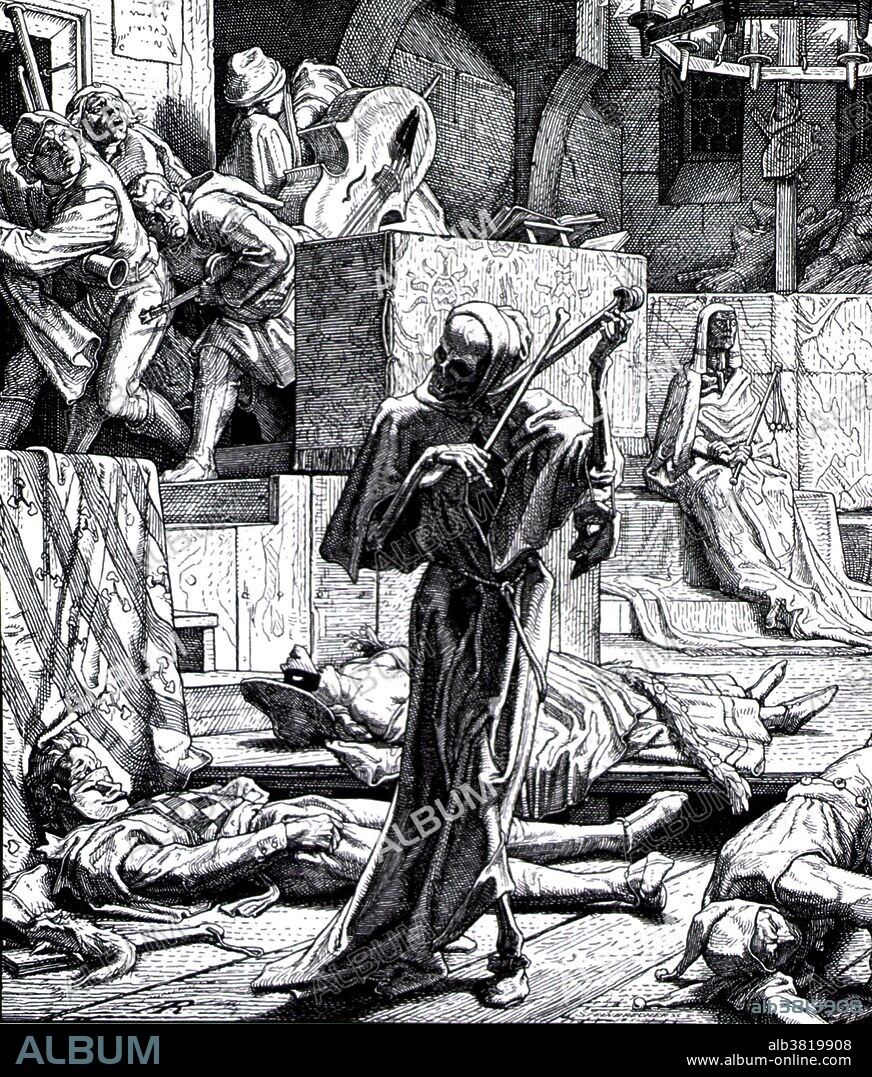alb3819908
Danse Macabre, Second Cholera Pandemic, 1832

|
Añadir a otro lightbox |
|
Añadir a otro lightbox |



¿Ya tienes cuenta? Iniciar sesión
¿No tienes cuenta? Regístrate
Compra esta imagen.
Selecciona el uso:

Título:
Danse Macabre, Second Cholera Pandemic, 1832
Descripción:
Ver traducción automática
Entitled: "Death as a Cutthroat", engraving by Alfred Rethel. Rethel was inspired by an account that the celebrated poet Heinrich Heine had made of the sudden outbreak of cholera in the year 1832, at a masquerade during the carnival of Paris. Here, Death plays a kind of violin, while the musicians flee. Close to them stands an emaciated female silhouette, wrapped in a shroud: symbol of the disease. In the foreground, some people have already died of cholera. Second cholera pandemic (1829-1851) reached London and Paris in 1831. In London, the disease claimed 6,536 victims and came to be known as "King Cholera"; in Paris, 20,000 died (of a population of 650,000), and total deaths in France amounted to 100,000. The epidemic reached Quebec, Ontario and New York in the same year, and the Pacific coast of North America by 1834. In the center of the country, it spread through the cities linked by the rivers and steamboat traffic. Although much is known about the mechanisms behind the spread of cholera, this has not led to a full understanding of what makes cholera outbreaks happen some places and not others. Lack of treatment of human feces and lack of treatment of drinking water greatly facilitate its spread. Bodies of water have been found to serve as a reservoir, and seafood shipped long distances can spread the disease.
Crédito:
Album / Science Source / NLM
Autorizaciones:
Tamaño imagen:
3300 x 3875 px | 36.6 MB
Tamaño impresión:
27.9 x 32.8 cm | 11.0 x 12.9 in (300 dpi)
Palabras clave:
1832 • ALEGORIA • ALEGORICA • ALEGORICO • ALLEGORICAL • ARTE • BAILE DE MASCARAS • BLANCO Y NEGRO • CIENCIA • DANZA MACABRA • DIBUJO • ENFERMEDAD • ESQUELETICO • ESQUELETO • EUROPA • FALLECIMIENTO • FIESTA DE DISFRACES • FRANCIA • GRABADO • HISTORIA • HISTORICO • ILUSTRACION • MASCARADA • MEDICINA • MEDICINAL • MEMENTO MORI • OBRA DE ARTE • PANDEMIA • PARIS • PESTE, LA • SIGLO XIX • SIMBÓLICA • SIMBÓLICO • SIMBOLISMO • SIMBOLO • VIOLIN
 Pinterest
Pinterest Twitter
Twitter Facebook
Facebook Copiar enlace
Copiar enlace Email
Email
